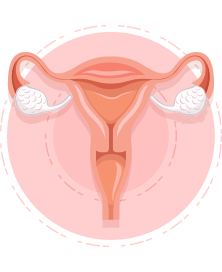Vaginal Care
Vaginal Prolapse

About Vaginal Prolapse
Muscles and tissues hold the pelvic region throughout your life. However, this structure can weaken due to various reasons. Whenever an organ sags from its normal position, it’s known as prolapse. Your vagina is one of the organs in your body’s pelvic region.
Vaginal prolapse is a condition when your vagina sags out of its position.

Symptoms
- Frequent urination
- Urine leakage whenever you laugh cough, sneeze, exercise, or have sexual intercourse
- Frequent bladder infections
- Lower back pain
- Bulging of the vagina
- Heaviness/pressure on the pelvis

Causes
- Menopause – your ovaries produce oestrogen, which keeps your pelvic muscles strong. During menopause, ovaries stop producing oestrogen, due to which your pelvic floor muscles can become weak.
- Vaginal delivery – if you have undergone difficult vaginal delivery, these muscles can stretch and weaken the muscles, causing a prolapse
- Ageing – one cannot stop ageing; your muscles lose strength as you age
- Lifting heavy things/weights, time and again
- Surgery – if you have undergone a hysterectomy or radiation treatment in the pelvic area, you could have a prolapse
- Chronic constipation

Surgical Treatments
These can be decided and performed only after thorough consultation with your gynaecologist
Non-surgical treatments
- Exercise – strengthening your pelvic muscles with Kegel exercises will help
- Oestrogen administration – elevating your oestrogen level may help

Prevention
While a vaginal prolapse cannot be prevented, the risk of developing it can be decreased by –
- No smoking
- Exercising regularly
- Maintain a healthy diet and drink lots of water – prevent constipation
- Lift heavy things, if any, in the right manner
- Keep a check on your weight too
A healthy lifestyle can help to treat and prevent pelvic organ collapse. Consult your gynaecologist before you make any decision.



